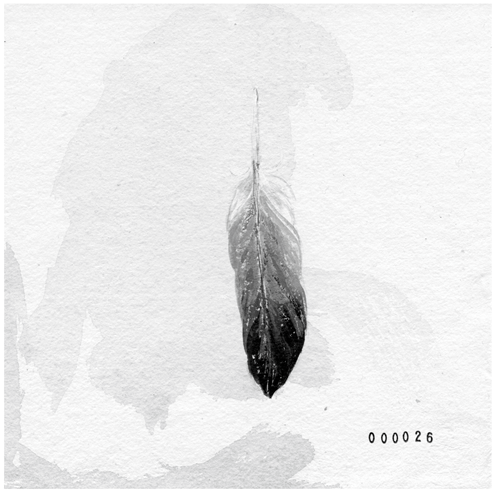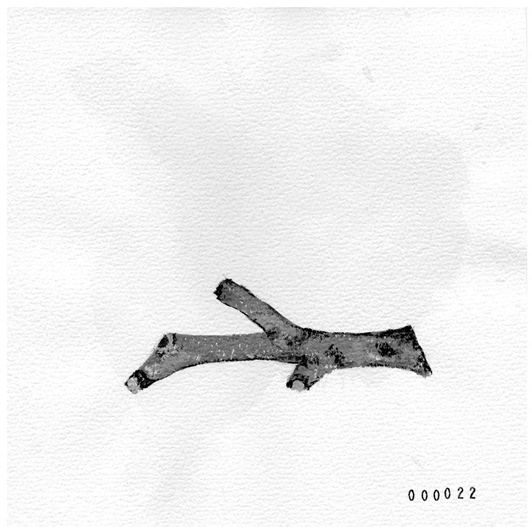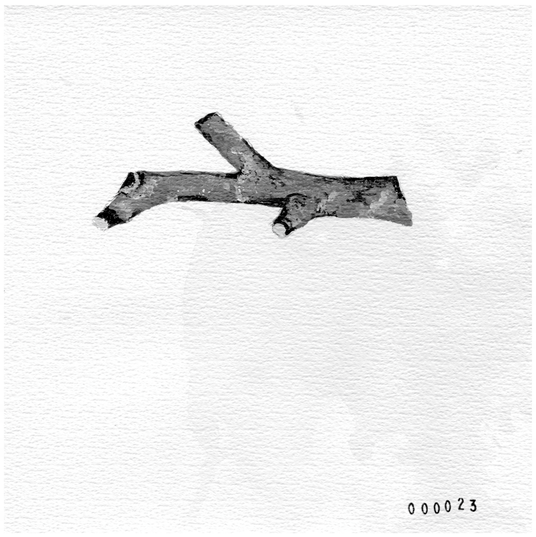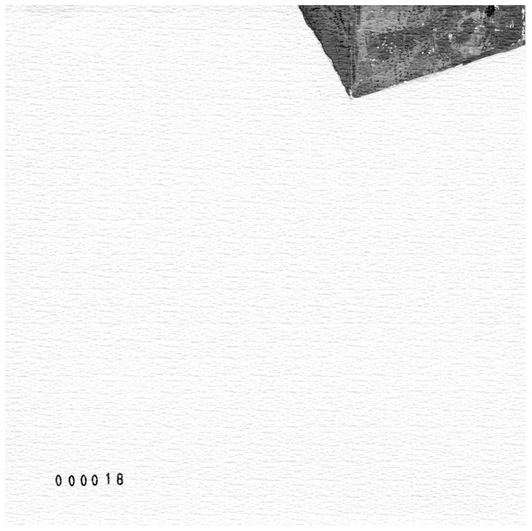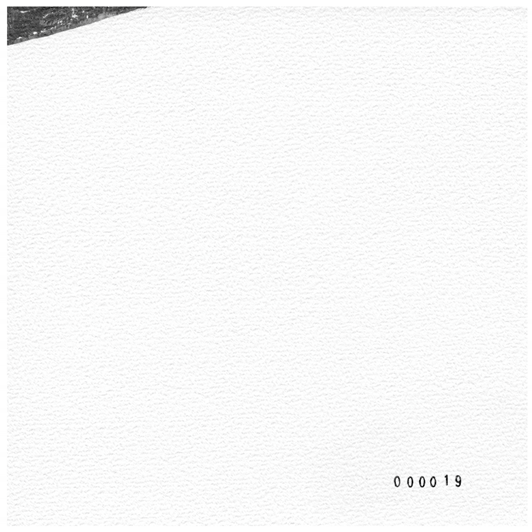The following excerpts—rearranged especially for this condensed reading space—are from a project entitled SPEECH (Nightboat Books 2019): a book of poetry, prose, and images from an archive of paintings that were made by the author during the time of the book’s writing.
Set in a fictional space overlaying a U.S. Midwestern city with a city in the Middle East, SPEECH explores the western-world overvaluation of assimilation and settlement, the liberal state as grantor of human rights, and speech as a measure of freedom. Methodologically, the book enacts a theory of “textimage,” something I explore in the e-monograph Pageviews/Innervisions: A Textimage Theory and Curriculum (Rattapallax/Furniture in Motion Series 2014). I write, “Textimage enacts a belief that has always felt like home to me: all genres are impure genres. The visual is inside words, just as we use words to make meaning from the visual.” This notion of impure genre as home is based on W.J.T. Mitchell’s concept of imagetext articulated in his book Picture Theory: that image and text are not opposites, and
… the interaction of pictures and texts is constitutive of representation as such: all media are mixed media, and all representations are heterogeneous; there are no “purely” visual or verbal arts, though the impulse to purify media is one of the central utopian gestures of modernism.
And so the following work is borne of this anti-/pre-/post-modern disposition, a disposition that finds a parallel in lived life: knowledge, place, and subjectivity are not stable and are made through recursive and repetitive processes. I have come to regard this way of being as “textilic”: where life and art are not measured against predetermined plans or a single aesthetic, but are made and remade in contexts of their own design and in contexts where there is no single map for how to be, how to read, how to look.
*
Two cities of middles overlapped inside my notebook. This was confusing though I was not unhappy. Until heat rose up in me and I went from asking “where should I live?” to thinking “here I have something to learn” which was to believe in poetry’s making despite the misrecognition “poet equals citizen,” as if a poet could only be real through official belonging. In fact, it had always been the opposite.
So I went walking with the others who vector across parking lots, alleys, and through city blocks where there is no set path. From my window I watched their movements as if they were stitching new embellishments into the city’s surfaces. Then I joined them making curves and diagonals. Without speaking, carrying my notebook with me in a canvas bag: city and me, sweating and absorptive. Over and over to step off the curb—tiny leaps—into the mix of watchful communication between me and the others who walk, between the backs of buildings in alleys, between me and drivers who yield and to whom I signal “thank-you” by placing a hand over my heart.
*
- she walks
- where the subject is not acting
- is not an event or muscle
- but is sympathetic
- to the sphere of passion
- of suffering of patience of
- relation is susceptible
- instead of immune—
- as here the slant built
- places of worship
- where impossible citizen
- does not stop walking but
- folds impossible glimpses
- inside
- not fully seen speaking
- here joins the unfolding
- pushing air up out
- through enormous fans
- she, not the ultimate suffering stranger
- she, not a threat to the national order of things
- and as treated window glass
- reveals management lines
- to order the faithful
- in equality rows
- she walks through a broadcast
- through veins not
- home
- as light glows a niche
- fueled by a tree
- not east or west
- as light doubles light
- impossible citizen lands
- a job in a place eaten up by
- origins
- where the horizon
- of who is who clears
- keeps place where
- they do not send speech out down the line
*
*
A feather, a brick, a twig. What are they doing in this book?
On my walks I occasionally bent down and picked one up, slipped the new relic into my bag. These objects sat near my writing desk and as SPEECH stopped and started I began to paint their likenesses always floating and flat: fugitive-like. They have no shadow, no weight, and no context. Placed on square substrates, usually in a set of four, they refer to the grid of weaving. And as weaving measures the passage of time while material accumulates, so do the paintings. Textilic, both. Hence, the idea to stamp each painting with a number in sequence.
*
- Writing not using a pen.
- Logos over-
- valued.
- Painting
- Scripting.
*
An archive of paintings and a book-length poem joined by a practice of walking and divided by form and materiality. I dreamt of a space that would house them both. One blueprint for such a space: inside the covers of a book. Here is a second blueprint for such a space:
When exhibited, each painting’s number corresponds to a couplet or line in SPEECH. This hinges the numbers to the book with the paintings in the middle: an odd bibliography. Viewers pick up a sheet of numbers and titles—a gallery-map-as-poem, a mobile didactic. They walk, look, read, re-compose SPEECH, moving at their own pace and along unpredictable pathways. So, too, with a city and with a book whose page numbers nudge readers in a certain direction.
The book’s architecture—the double-page spread that opens as the reader holds the front and back—implies a beginning, middle, and end. Yet this structure can be subverted by reader sovereignty at any time. This uncertainty adds extra vibration to an already-vibrating citational space where language is framed by page boundaries and by front and back covers. Similarly, each numbered painting does not index a complete thought though the object painted appears to be revered.
*
*
Perhaps the paintings point toward the botanical tradition. Yet the objects are not remarkable and as an archive there is really nothing to be learned or studied. And so while the statement “this is a feather” is true, the paintings leave the tether of “what kind?” and “why?” unfastened.
The subject who won’t be indexed precisely and who makes place where self-indexing is relational, various, and repetitive, also makes paintings from this practice and from the objects of her context.
Why not add the disciplinary divide between text and image to her collection of borders crossed?
*
At the antiques souk he would not sell the book to me. Because of the wrong religion I was allowed to see the writing inside and not to touch. I asked why without access without touching. Closing its covers he answered, “We are a tolerant people.”
- If you are a vector without access.
- If painting and the desire for color crushes.
- If the vector once the poem now
- painting as
- bibliography.
- Painting a bibliography.
- Burying narrative under color
- under love story under object. Just now finding its shades.
- A lens for watching the skies change.
- You go quietly into a garden.
- A fence of beauty guards against speech, lets
- speech in. Both ways.
- About a place I do not know
- I will never hear the argument so surely again.
- This speech.
*
Who is she, walking here? How is she a guest and who does she host? Does she walk comfortably with history and the world? What couldn’t keep her at home? What is her language? Or I heard nothing at all, feeling disregard, nonchalance, the absence of curiosity directed toward me. My own voice rang out sharply then.
Susceptible, I took in the questions and silences. I composed an essay on “writing in an elsewhere” and made a project called “Last Book”: stacks and stacks of the same stark white book without title, author, cover art, publisher’s imprint. I said I was quitting poetry until I remembered my refugee father (who called himself a refugee when we made fun of his mismatched clothes—“Don’t make fun of the poor refugee!”—and we would laugh) who unintentionally taught me what poetry is for. His seat in the living room where weekly he hosted guests after church and I watched, shocked by his confidence to do so. I began to imagine hosting others which is to speak. Which is not necessarily to belong but how to live with longing.
*
At the base of society she finds the base of her skull. Her superstructure waits for shifty instrument feedback until a father went refugee status for her to say, “There I can say anything I want. This has weight. Was home”—
His slouching historical back his bones as feathers their secret fissures ask, “Did you know there is an organization determining how free is your country? Check your rating fluxing.”
“Whose country? Which you? Whose heat?”
“Not the refugee with his pants unzipped his pants short. Messy tourist go loud and others stealth. Messy citizen goes loud or who makes themselves small in public space or wanders freely looking up.”
Say hello to the gap in her dictionary a gap in her blouse. To cover this up and stop speaking in such an accent she never learned his tongue. To cover this up his too many arms. All the hands to cover up his gaping accent.
*
With a listening ear I saw the former place more clearly in the new place; this clarity made a third space which was more like a method and less like a site. Not speaking for a place I wrote out of place and toward the cities and people ambivalent about my permanence and my art—those who have been, incidentally, the most generous of teachers.
*
Traces of the archive of objects work their way into the book object—as cover art and intermezzo. First it was the writer and now it is the reader who finds a thing to pick up and inspect: feather, brick, twig, words, book. They take the ordinary thing into their home where home is inside and outside, present and past, made and remade: parts of SPEECH.
*
The following texts and artworks are incorporated into this work and occasionally surface in recognizable form in these excerpts of SPEECH: “Abu Dhabi Forms and Fragments: Muslim Space and the Modern City” by Mohamed El-Amrousi and John Biln; “Al Madhafah: the Living Room Performance” by Sandi Hilal as part of the “Permanent Temporariness: Sandi Hilal and Alessandro Petti” exhibition at the New York University Abu Dhabi Gallery 2018; Economies of Abandonment: Social Belonging and Endurance in Late Liberalism by Elizabeth Povinelli; Impossible Citizens: Dubai’s Indian Diaspora by Neha Vora; “Refugees and im/migrants,” virtual issue of the American Ethnologist, Heide Castañeda, Seth M. Holmes, Annastiina Kallius, and Daniel Monterescu, Eds.; Supple Science: A Robert Kocik Reader; “The textility of making” by Tim Ingold; “Walking in the City” by Michel De Certeau from The Practice of Everyday Life.
Funding
This research received no external funding.
Conflicts of Interest
The author declares no conflict of interest.
© 2019 by the author. Licensee MDPI, Basel, Switzerland. This article is an open access article distributed under the terms and conditions of the Creative Commons Attribution (CC BY) license (http://creativecommons.org/licenses/by/4.0/).
